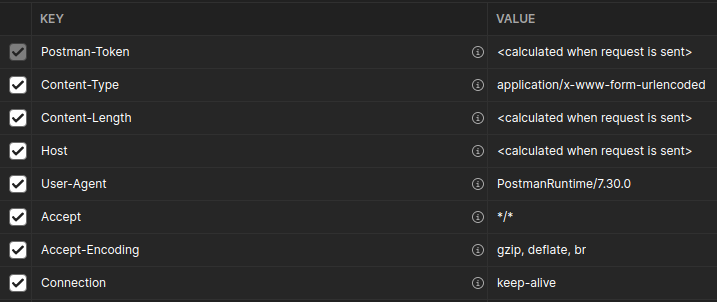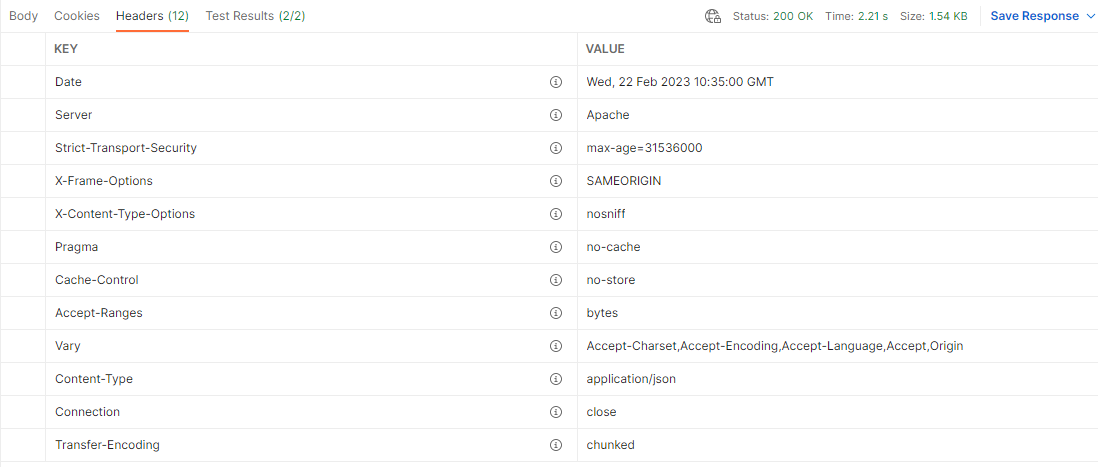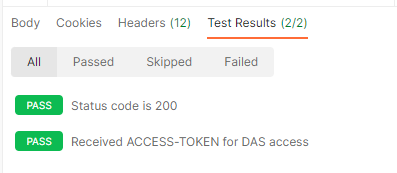The Postman request:
Request configuration
a.- Headers
Standard headers, nothing to update here.
b.- Body
Values that are used for this demo:
| Key | Value | Notes |
|---|---|---|
| grant_type | client_credentials | |
| scope | das-api/office-exchange | type of access to give to the user |
| client_assertion_type | urn:ietf:params:oauth:client-assertion-type:jwt-bearer | standard jwt bearer authentication |
| client_assertion | {{client-assertion}} | value to be retrieved from the Postman environment. Before executing this request, please generate your assertion as per indicated in these pages: e.3.- Executing the sample scripts under linux or e.4.- Executing the sample scripts via docker. Then update the Postman environment with the obtained JWT assertion |
c.- Pre-request script
Nothing here.
d.- Tests script
The following script is executed after the request is sent, to evaluate the response and also to set up environment variables (if they are needed for following requests)
Expected response
e.- Body
In this case the body will mainly show the access token provided y the time left for its use.
f.- Headers
Normal headers.
g.- Test results
This depends on the test we set up in the test script





